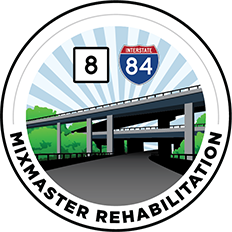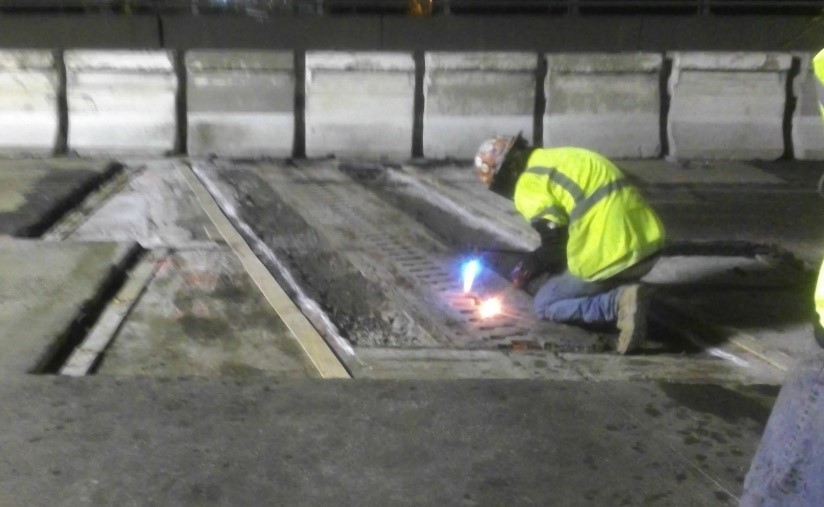Refurbishing Interstate 84
September 22nd, 2020
I-84 was fully open to travel in 1968. During the era in which the Mixmaster was constructed, the “finger joint” expansion deck joint was the prevailing joint system. A finger joint is a steel joint design that allows water to pass through the joint. A steel trough directs roadway water to the bridge’s drainage network. As long at this trough remains intact and unimpeded by debris, the system functions efficiently; however, this requires constant upkeep. Unfortunately, if not well maintained, sand, salt and debris block the trough leading to steel and concrete deterioration.
Finger Joints
- Accommodate movements greater than 3 inches
- Comprised of cantilevered fingers loosely interlocking each other over the opening
- Sometimes installed with drainage troughs to catch and channel away water and debris
- Can jam, bend, or break during service due to horizontal and/or vertical misalignment during construction
Bridge decks have both fixed and expansion ends that allow the bridge to expand and contract under temperature changes. For reference, a 200-foot bridge span will expand 1 inch given a 60 F temperature change. It is important that a joint be able to accommodate these movements freely so that the forces from the movements of the bridge are not transferred to the substructure below.

This is not the first time that the ten (10) bridges that make up the Mixmaster have undergone deck and joint repairs, which is a major component of most bridge rehabilitation projects. For those of us who remember the late 80’s, extensive repairs were made to the Mixmaster at that time, including the complete repainting of the structure.
In the early 80’s, the asphaltic plug joint (APJ) design became the preferred joint system throughout the country. During the refurbishing of the Mixmaster in the late 80’s, the finger joints were modified to accommodate APJs. APJs are still commonly used and consist of an elastoplastic bituminous binder with a mineral aggregate filler.
Asphalt Plug Joints
- Accommodate movements less than 2 inches
- Constructed by placing a modified elasto-plastic bituminous binder with mineral aggregate in a block-out centered over the joint, with a backer rod in place
- Can sustain damage when subjected to very rapid changes in temperature
APJs reduce maintenance costs and eliminate water from permeating the joint but tend to crack within the joint or rut under heavy traffic loads. APJ’s are not suggested where significant expansion and contraction is required.
Today, with improvements in materials, most deck-end repairs within the Mixmaster group of bridges will utilize an Elastomeric Concrete Header with a preformed bonded rubber joint seal insert. Elastomeric Concrete is best described as a more flexible concrete comprised of a 2-part polyurethane material mixed with aggregates and water (traditional Portland Cement does not include polyurethane).
As a driver, we are sure you to have felt the “thud” of your tire impacting gaps in the roadway, a feeling that is more pronounced during the winter when colder temperatures cause the contraction of the steel and concrete. Often the “thud” is the result of your vehicle passing over a bridge joint. Elastomeric Concrete in these locations is better suited to handle impact and withstand the rigors of daily traffic and winter maintenance.


As shown in the detail above, fitted between the deck-end headers is a preformed EMSEAL expansion joint. The joint seal will prevent water and road salts from coming in contact and deteriorating the structural steel and concrete substructure below. The foam-backed joint system has an “M” shaped silicone rubber top face. EMSEAL expansion joints are easier to repair and less expensive to maintain.
In our next article, we will provide information pertaining to the extensive effort required to replace a bridge joint, the difficulties we have encountered and the progress to date.
 I-84 WATERBURY PROJECTS
I-84 WATERBURY PROJECTS ROUTE 8/I-84 MIXMASTER REHABILITATION
ROUTE 8/I-84 MIXMASTER REHABILITATION









